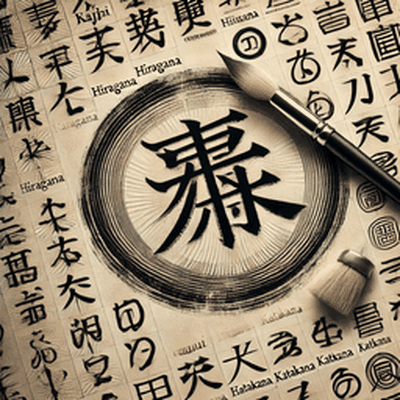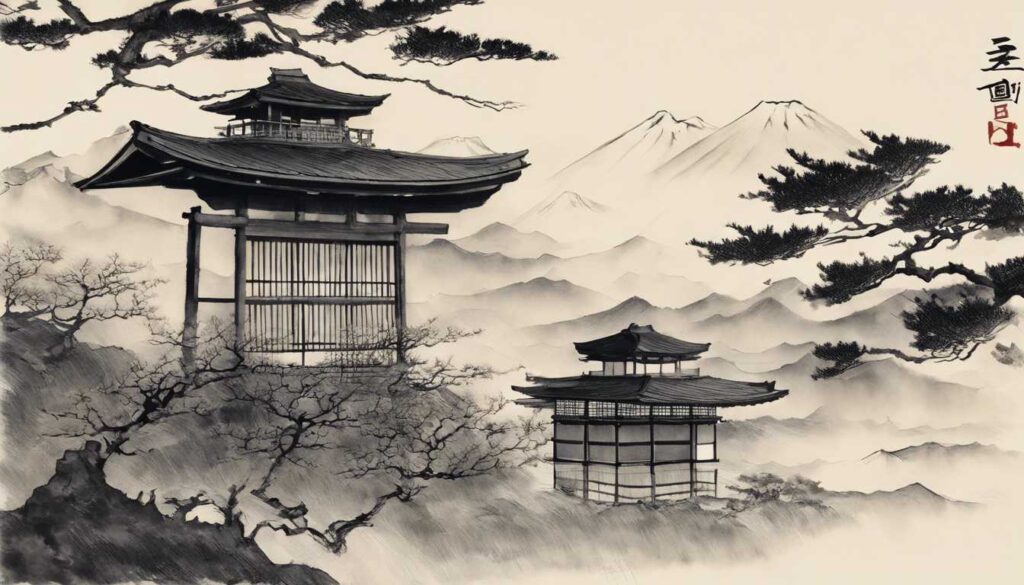An In-Depth Exploration of a Fascinating Script
Japanese is a language that stands out for its unique cultural richness, melodic sounds, and, perhaps most intriguingly, its intricate writing system. Unlike most languages that utilize a single alphabet, Japanese writing comprises three distinct scripts: Kanji, Hiragana, and Katakana. These scripts each have their own history, usage, and cultural significance, making the Japanese language both challenging and captivating for learners. To truly master Japanese, one must delve into the nuances of its writing system, a task that, while demanding, reveals the profound beauty of the language.
Kanji: The Pictographic Foundation of Japanese Writing
The Historical Journey of Kanji
Kanji are characters that were borrowed from Chinese and have been integrated into the Japanese language for over a thousand years. Introduced to Japan during the 5th century AD, Kanji enabled the Japanese people to transition from a purely oral language to a written one. Each Kanji character is logographic, representing an entire word or concept rather than just a sound, as in alphabetic systems. This allows Kanji to convey complex ideas succinctly, but it also contributes to the difficulty of mastering the script.
The Complexity and Structure of Kanji
The complexity of Kanji lies in its structure and usage. There are thousands of Kanji characters, each with multiple readings and meanings. The characters can be broken down into two main components: the radical (the basic part of the character that often indicates meaning) and the phonetic component (which suggests pronunciation). This combination allows each Kanji to express a wide range of ideas and sounds, depending on the context in which it is used.
For example, the Kanji “日” can be read as “hi” (meaning day or sun) or “nichi” (as in the word “nichiyoubi,” meaning Sunday). The same character can have different meanings when combined with other Kanji, creating compound words. This makes learning Kanji a formidable challenge but also an intellectually stimulating experience.
The Role of Kanji in Modern Japanese
In contemporary Japanese, Kanji is used for nouns, verb roots, adjectives, and certain names. Despite the influx of Western influences and the increasing use of Katakana for foreign words, Kanji remains a cornerstone of the language. The ability to read and write Kanji is essential for functional literacy in Japan, and understanding it opens up a deeper connection to Japanese literature, history, and culture.
Hiragana and Katakana: The Phonetic Alphabets of Japanese
While Kanji represents ideas and objects, Hiragana and Katakana are phonetic scripts used to represent sounds. Together, these two scripts are known as “kana.” They play a crucial role in the Japanese writing system, complementing Kanji and allowing for a complete representation of the language’s sounds.
Hiragana: The Script of Japanese Origin
Hiragana is the most widely used phonetic script in Japanese and is often the first script that children learn. It consists of 46 basic characters, each representing a specific syllable. Hiragana is used for native Japanese words and grammatical elements, such as particles, verb endings, and auxiliary verbs.
The origins of Hiragana can be traced back to the Heian period (794-1185), where it was developed from cursive forms of Kanji. Hiragana was initially used by women in the court, as they were generally excluded from learning Kanji, which was considered the script of the elite. Over time, Hiragana became more widely used, eventually forming a standard part of the Japanese writing system.
Katakana: The Script for Foreign Words and Names
Katakana is another phonetic script with 46 basic characters, but it has a distinct role in the Japanese language. While Hiragana is used for native Japanese words, Katakana is primarily used for foreign loanwords, foreign names, and technical terms. For example, the English word “computer” is written in Katakana as “コンピュータ” (konpyuuta).
Katakana’s angular and straightforward strokes make it easily distinguishable from Hiragana’s curvier and more fluid forms. The script was also derived from Kanji, but through a different evolutionary path, resulting in a more rigid and formal appearance.
The Interplay Between Hiragana and Katakana
The coexistence of Hiragana and Katakana within the same language adds to the complexity of Japanese writing. While both scripts are phonetic and represent the same sounds, their usage is context-dependent. This division of labor between the scripts allows for a rich and nuanced expression of the Japanese language, but it also requires learners to master not just one but three different writing systems.Talk.fr Talk.br Talk.com Talk.uk

The Art and Challenge of Mastering Japanese Writing
Mastering Japanese writing is no small feat. It requires dedication, patience, and a deep understanding of the cultural and historical contexts that have shaped the language. However, the journey of learning to read and write Japanese offers immense rewards, both intellectually and culturally.
The Process of Learning Kanji, Hiragana, and Katakana
For beginners, learning the kana (Hiragana and Katakana) is often the first step. These scripts are relatively straightforward, and once mastered, they provide a solid foundation for learning Kanji. However, even native speakers continue to learn Kanji throughout their lives, given the sheer number of characters and their complexities.
Get tips on learning Kana on Japanese Ammo with Misa
Many learners use mnemonic devices, flashcards, and writing practice to memorize Kanji characters. The repetitive nature of writing Kanji helps in internalizing their forms and meanings. Additionally, understanding the etymology of Kanji characters—how they were derived from pictures or abstract concepts—can aid in memorizing their meanings and readings.
The Role of Japanese Calligraphy (Shodo) in Writing Mastery
Calligraphy, or “shodo,” is an art form that elevates the practice of writing Japanese characters to a spiritual and meditative exercise. In shodo, the focus is on the beauty of the characters, the balance of strokes, and the flow of the brush. Practicing calligraphy not only helps in mastering the form of the characters but also connects learners with the aesthetic and philosophical aspects of Japanese culture.
Learn about Shodo on BBC’s overview
The Benefits of Mastering Japanese Writing
The ability to read and write Japanese opens up a world of opportunities, from accessing Japan’s rich literary tradition to navigating daily life in Japan with ease. Furthermore, the discipline and cognitive skills developed through studying such a complex writing system can enhance one’s overall learning abilities.
For those pursuing careers in translation, international business, or academia, proficiency in Japanese writing is indispensable. It allows for a deeper understanding of Japanese society, literature, and history, providing insights that are often lost in translation.
Discover careers with Japanese on GoAbroad
Conclusion: Embracing the Complexity of Japanese Writing
The Japanese writing system is a unique blend of art, history, and language, offering a fascinating challenge to those who choose to learn it. While the complexity of Kanji, Hiragana, and Katakana may seem daunting at first, the rewards of mastering these scripts are immense. Through dedicated study and practice, learners can unlock the profound beauty of Japanese writing and gain a deeper appreciation of the language and culture.

